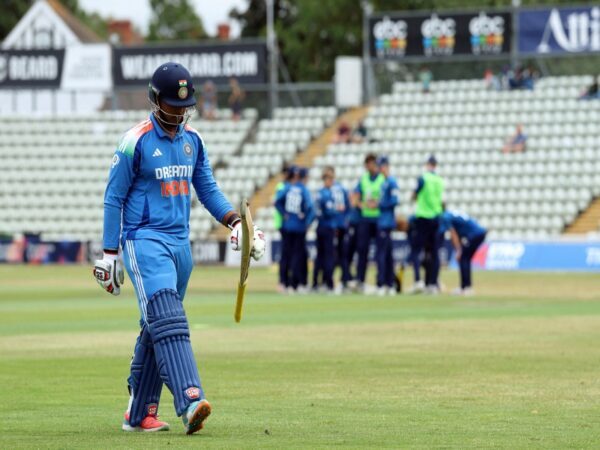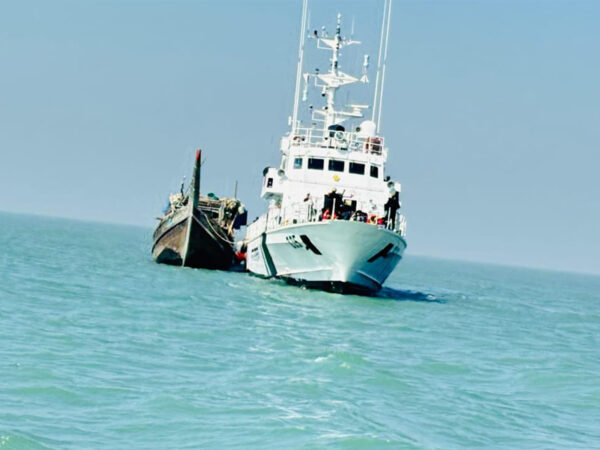
Uttarkashi Tunnel: Vertical Drilling Team On Standby
A team from Sutlej Jal Vidyut Nigam (SJVN) is now on standby mode to initiate vertical drilling from top of the Silkyara-Barkot tunnel to rescue to reach the 41 labourers trapped inside the under construction tunnel for the past 14 days.
This comes amidst the heavy-duty auger machine repeatedly hit obstacles as as it drilled through the rubble. On Friday evening the rescue efforts were suspended as the auger machine faced another hurdle a short while after drilling resumed.
The 12 member team of SJVN Limited is awaiting the nod to initate the vertical drilling process. an obstacle on Friday evening. The workers are trapped in an area that is 8.5 metres high and 2 km long in the built tunnel portion. This 2 km portion of tunnel is complete including concrete work that provides safety to the workers.
On November 20, the Ministry of Road Transport and Highways said that the first machine of SJVNL for the construction of the Vertical Rescue Tunnel had reached the tunnel site and operations had commenced post completion of access road by the Border Roads Organization. Machinery for vertical boring are being mobilized by Oil and Natural Gas Corporation (ONGC) from the US, Mumbai and Ghaziabad, a statement read.
A final decision on the vertical drilling option is likely to be taken by Sutlej Jal Vidyut Nigam (SJVN) and the Oil and Natural Gas Corporation.
An SJVN official said, “We have given a proposal to the administration to do vertical drilling in 5 to 6 days; our team has done the survey for drilling; and apart from this, their drilling machine has also reached the spot to do the drilling. We are just waiting for the order to come.”
“The vertical drilling will be done from the top of the tunnel and about 85 to 90 metres will have to be drilled, which will take about five to six days. When drilling from inside the tunnel When the work of building the rescue tunnel gained momentum, the plan of doing vertical drilling was put on hold, but now, due to the hurdles we are facing, we have once again come into standby mode to see if the administration needs vertical drilling. We will start our work immediately after receiving the order,” added the SJVN official.
The official said that his team works on hydroelectric projects and thermal power projects and his company has a lot of experience in tunnelling; hence, the team has been called here.
Surveyor Ajit Pal of Parsan Overseas Pvt. Ltd., Delhi, who conducted the survey of vertical drilling, told ANI that his team had done an ERI (Electrical Resistivity Imaging) survey in which the land was examined for the safety of the drilling operation.
“We have done this survey from the top of the tunnel; rods are placed every 10 meters and then this survey is done by passing the current, after which we send the data to our company. After this, we analysed it and identified the place that would be safe for vertical drilling. Our survey found that it would be safe to do vertical drilling from above the tunnel at 320 metres from the start of the tunnel; for this, we need to do 80 to 90 metres. Drilling will have to be done so that we can take out the people trapped inside the tunnel from above.
Equipment for the vertical drilling has been mobilized from Gujarat and Odisha through Railways as the 75-tonne equipment could not be airlifted.
According to Ministry of Road Transport and Highways, the ONGC, having expertise in deep drilling, had also started initial work for vertical drilling from Barkot end.
The Border Roads Organzsation (BRO) team personnel have been instructed to transport machines to enable vertical drilling on the tunnel through the approach road they recently built to access the top of the hill, officials said on Saturday.
Officials earlier today said that manual drilling will begin soon to cut through the rubble that separates rescuers from the 41 trapped workers in the collapsed portion of the Silkyara tunnel.
According to officials, manual drillers will get to work once the US-made, heavy-duty Auger drilling machine is removed from the pipeline through which the trapped workers are to be brought out.
Manual drillers will work to cut through the remaining rubble that separates the rescuers from the workers and enable the insertion of the pipeline through the further few metres that are yet to be covered.
The ongoing operation to rescue workers, who were trapped after a portion of the tunnel collapsed on November 12, entered its 14th day on Saturday.
Success could soon be achieved in taking the Auger driller out of the pipeline, officials informed further, adding that the heavy-duty drillers could now be moved back by 22 metres.
Speaking to ANI, a senior official involved with the rescue operation said manual drilling could start soon.
He added that the remaining debris, extending approximately up to 6 to 9 metres, which stands between the rescuers and the trapped workers, will be removed through manual drilling.
Elaborating on the reasons why the officials involved in the rescue operation have decided to remove the Auger from the pipeline, the senior official told ANI, “While drilling with the US-made Auger machine, if we hit an obstruction every two to three feet, we have to remove it. And, every time we hit an obstruction, we have to roll Auger back 50 metres (up to which the pipeline has been laid). After running repairs, the machine has to be pushed back up to 50 metres, which takes about 5 to 7 hours. This is the reason why the rescue operation is taking longer than it should.”
“The rescue team has now decided that the pipeline will now be extended further through manual drilling over small distances. Even if we hit an obstruction further up, the issue could be resolved manually and the pipeline could be extended further without losing out on precious time,” the official added.
He informed further that after drilling up to a further 5 metres, the rescuers will reach the final few metres that separate them from the trapped workers.
However, the officials refrained from quoting a timeframe within which the rescue mission could be completed, saying that they were hopeful of a positive outcome once the manual drilling starts on Saturday.
Earlier, a team of experts, who came to conduct a survey at the tunnel site, informed that there were no heavy objects up to 5 metres inside the tunnel.
The team from Parsan Overseas Pvt Ltd Delhi used the ground-penetrating radar (GPR) technique to examine the rescue tunnel.
Ground Penetrating Radar, also known as GPR, Georadar, Subsurface Interface Radar, or Geo-probing Radar, is a totally non-destructive technique to produce a cross-section profile of the subsurface without any drilling, trenching or ground disturbances.GPR profiles are used for evaluating the location and depth of buried objects and to investigate the presence and continuity of natural subsurface conditions and features.
After examining the rescue tunnel, geophysicist and GPR survey team member B Chendhoor said they were called to the scene after the Auger driller hit an obstruction.
After a portion of the tunnel caved in on November 12, the debris falling in the 60-metre stretch on the Silkyara side of the tunnel trapped 41 labourers inside.
The workers are trapped in a 2 km-built portion, which is complete, including concrete work, which provides them safety. (ANI)
For more details visit us: https://lokmarg.com/



